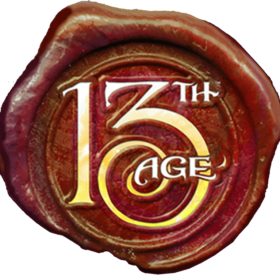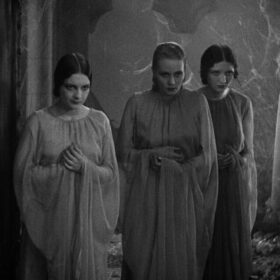13th Age
13th Age Ideas That Aren’t Worth A Full Page XX Article
 When brainstorming for new See Page XX articles, one comes up with lots of ideas that aren’t enough for a full piece, but might spark something if you put them out into the world. So, here’s a grab bag of ideas that almost, but not quite, made it. Maybe they’ll take root in one of your games.
When brainstorming for new See Page XX articles, one comes up with lots of ideas that aren’t enough for a full piece, but might spark something if you put them out into the world. So, here’s a grab bag of ideas that almost, but not quite, made it. Maybe they’ll take root in one of your games.
- Where do magic items come from? One Unique Things. When a hero perishes, their singular spirit imbues a nearby item, usually one of their prized weapons or tools. That item becomes a magic item; its powers and quirks are connected to the One Unique Thing of the dead adventurer. Player characters who perish create an item that gets passed to their replacement PC.
- Campaign Losses work like the side effects of the Resurrection spell. The first one’s not that bad. The second one’s really bad. The third… yeah, don’t go there. The fourth’s basically “you survive, but all is lost.”
- There used to be 13 cities in the Dragon Empire. Necropolis and Dwarfhome are two of the missing ones – where are the other four?
- When running a 13th Age one-shot at a con, look for ways to involve the players’ One Unique Things. Incorporating and reworking player ideas is absolute gold.
- Instead of having all the players roll all their relationship dice, build a table out of all their relationships and roll on that. It gives you only a single icon to work into the next game session, which is a lot easier.
- Declare that the players have to show that the fight is escalating in peril and drama to justify increases in the escalation die. If everyone’s just standing around swinging swords and throwing the usual healing spells, that’s not an escalation. Ask the players for cool moves; throw in terrain perils and other challenges. Escalation should mean more drama!
- Instead of random encounters, have a random chance of adding a dangerous foe to any encounter. In one game I ran recently, the evil Briar Elf hunter had a 1 in 6 chance of popping up on top of any encounter in the woods. Maybe he’d turn a fair fight with some orcs into a hellish death trap – or maybe he’d show up when the PCs are talking to the friendly Druid, and put an arrow through the Druid’s throat mid-conversation.
- Two player characters who are adjacent to each other on the battlefield can work together. A character who rolls a high number on a d20 can choose to assist their comrade by ‘passing’ the roll to their comrade. The passing character loses their next standard action.
- Effective rituals are tied to places of power in the land. Want to divine the location of the bad guy? Well, you’ve got to find a hilltop with ancient runes connected to the Archmage for that? Go quest!
- The seasons in the Dragon Empire work like a clock, rotating around the map. The Koru Behemoths bring spring, and summer follows in their wake. If they never come back, it’ll be eternal winter.
- Generate the current Age using the Book of Ages’ rules, so you know the meta plot of your campaign before it even starts. (“Ok, this one’s about the decline of the elves and the rise of the gnoll priests.”)
- Get hold of a d3, a d4, a d6 and a d8. For minor fights, use the d3 as the escalation die. Most fights use the d4. Major fights use the d6. If the players take action to raise the stakes or get a tactical advantage, up the die by one step.
- Don’t feel beholden to have 13 entries in all your 13th Age tables. It can be a useful tool to force creativity if you feel you have to fill thirteen rows in, say, a list of random encounters or rumours, as you get past the obvious ideas and make yourself dig deep for weird stuff. But it can also drive you slightly mad…


